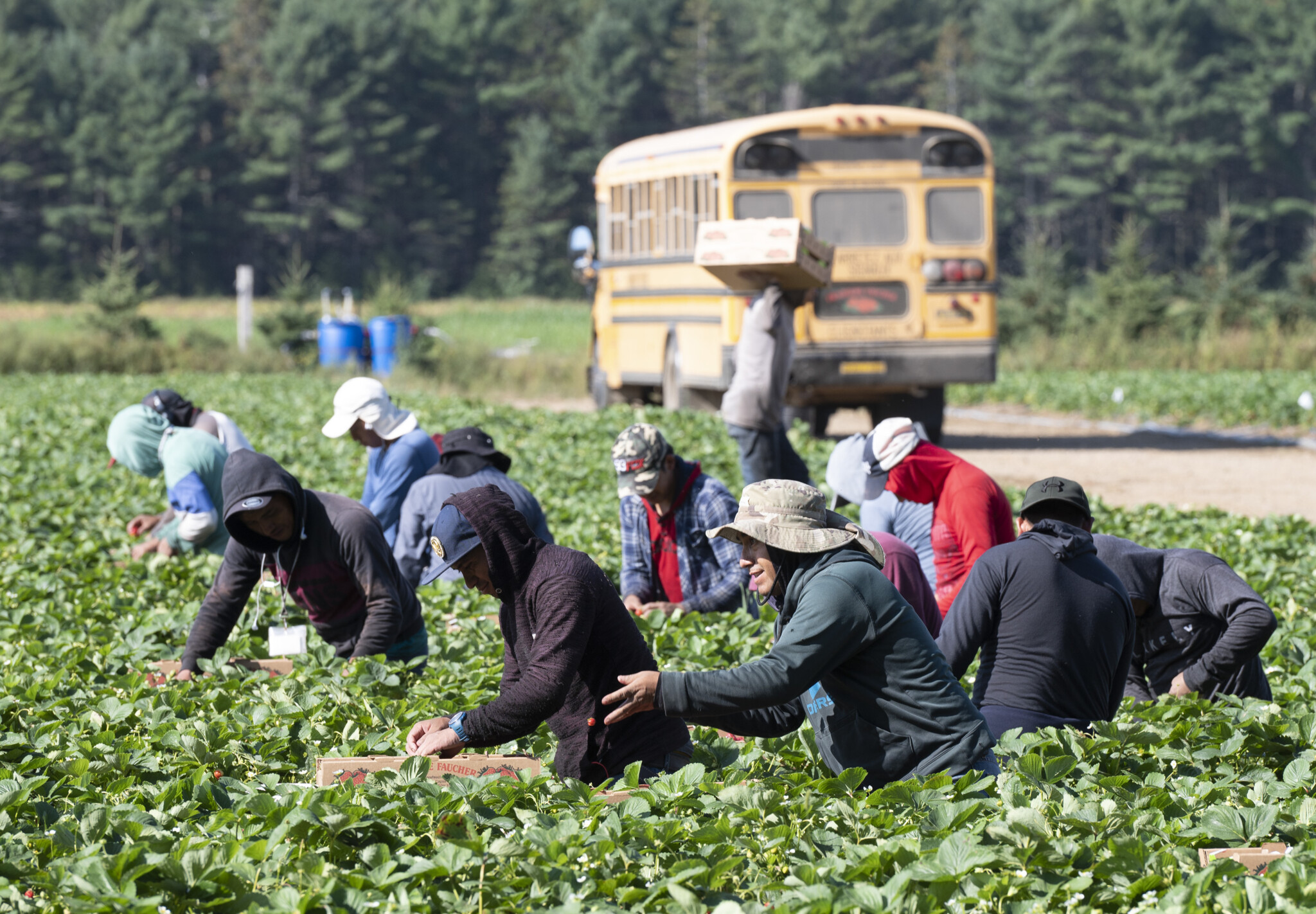Food & Climate
Donald Trump’s return to power has once again been a disaster for temporary foreign agricultural workers in U.S., whom farm owners employ to compensate for the shortage of this type of labor domestically. These workers previously came from several countries, most notably Mexico.
Before Trump return, the H-2A program was allowing U.S. employers or U.S. agents who meet specific regulatory requirements to bring foreign nationals to the United States to fill temporary agricultural jobs. A U.S. employer, a U.S. agent as described in the regulations, or an association of U.S. agricultural producers named as a joint employer, must file Form I-129, Petition for a Nonimmigrant Worker, on a prospective worker’s behalf.
So, In the past decade, the number of H-2A workers hired by American farmers has tripled with government support, according to a report seen by “Food & Climate” platform.
But now, grant funding has been paused by Stalled USDA Payments, Cuts to USAID.
The story before and after Trump
George Brittenburg tells the story of the temporary foreign agricultural workers in U.S. before and after Trump, through his own.
Brittenburg describes work on the farm as akin to “trying to wake up a big giant.” Brittenburg grows organic vegetables and raises livestock across 200 acres, and he needs help to shake off the winter and get things moving again. Like many farmers, in past years, he struggled to find people to do that.
So, in 2016, he started bringing in help through the federal government’s farm guestworker program, called H-2A.
Many see it as the best pathway to hire immigrant workers legally, but workers can also face exploitation, since their legal status, housing, and often transportation are all linked to their employers.
In 2023, Brittenburg took time out of the growing season and invested resources into applying for a new U.S. Department of Agriculture (USDA) grant opportunity he thought might help even further. Biden’s USDA pitched the Farm Labor Stabilization and Protection Program (FLSP) as a pilot project to improve conditions for workers while easing the strain some farmers experience paying and housing guestworkers.
Brittenburg was looking forward to financial assistance that would allow him to bring in additional help and offer employees benefits like paid sick days.

To that end, USAID provided funding and support to those Central American governments (El Salvador, Honduras, Mexico, and Guatemala) to try to make them the go-to resource for American farmers, at no cost.
USAID partnered with the USDA to require some farmers, like those in the FLSP program, to begin recruiting from those countries as one way to boost the effort. However, according to the former USAID official, the goal was much broader: To create a new worker pipeline for all farmers.
In February, President Trump slashed staff at USAID and moved what was left of the agency into the Department of State. He said his administration would eliminate 90 percent of USAID’s foreign contracts.
Another story
Matthew Fitzgerald tells another story about the temporary foreign agricultural workers in U.S.
Fitzgerald grows corn, soybeans, wheat, and beans on 3,000 acres in McLeod County, Minnesota. “My first choice is to have domestic folks, but unemployment is less than 4 percent in our county. There just aren’t people that want to do this work,” he said. He started hiring H-2A workers in 2021 and thought the FLSP program might help him use the guestworker program more effectively, to “be a better employer and then find better workers.”
“There are folks that are really contemplating bankruptcy if they don’t get these funds. There are very serious situations,” he said. “Somebody messaged me and said they spent $400,000 on improving their housing for their workers and were expecting all the funds to go towards that.”
“There are folks that are really contemplating bankruptcy if they don’t get these funds. There are very serious situations.”

Several other farmers in the program have already spent money, submitted for reimbursements, and are now waiting for payments ranging from $50,000 to $600,000. While Fitzgerald hasn’t requested a reimbursement yet, he said he planned his financial obligations for the upcoming season based on the expected cashflow. The way the program was designed, when farmers hit certain milestones, they’re eligible for payments.
But he and several other farmers who spoke to “Civil Eats” said they’re not sure if they should invest time and resources into reaching those milestones if the payments might never arrive.
The biggest issue, he said, is what might happen if the USDA decides to cancel the program altogether. Enrolling in the program required the farmers to add the steps they were taking to improve labor practices on their farms into their legal contracts with the Department of Labor. So, for instance, if a farmer included housing upgrades, overtime, or paid sick days, it’s now in the contract, regardless of whether they receive the promised funding in the future. “Everyone who received this grant has made legal commitments to the Department of Labor, and so those are non-negotiable,” he said. “Those aren’t things we can cancel, so we’re going to be up a creek if they say, ‘Well, we’re not paying”.

